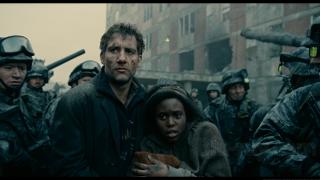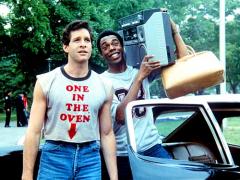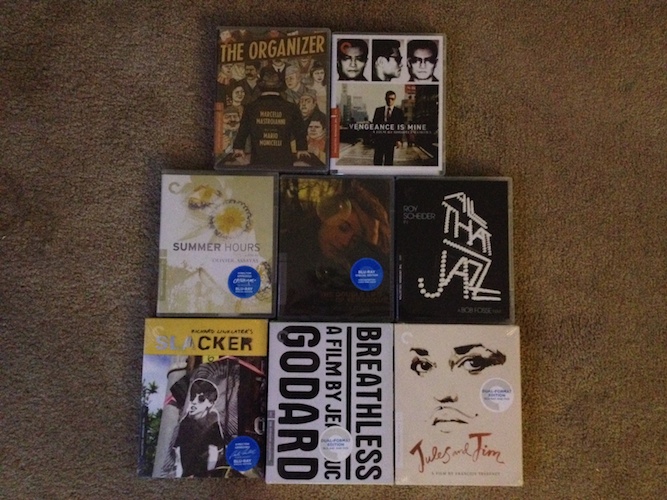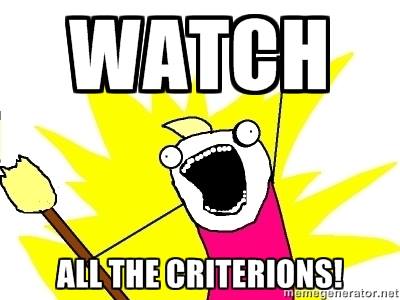SHOAH, CLAUDE LANZMANN, 1985
Roger Ebert famously refused to rank or categorize Shoah with other films, whether they were narrative or documentary, because it simply could not be compared with other films. It stands on its own. As a history buff, I hold similar feelings. This is as much an historical document as it is a documentary about the holocaust. That said, it also turned out to be a groundbreaking documentary with a distinct style that influenced other films. The documentaries of Ken Burns and Werner Herzog owe a debt to Shoah, as do many others. It turned out to be a certain benchmark of documentary filmmaking, and it still stands near the top.
The right time to create an all-encompassing, reflective, history of the holocaust was exactly when Lanzmann set forth on his lengthy project, in the early-70s, which we spent an exhaustive 12-years working on until it was finally finished and released in 1985. The timing was ideal for two reasons.
The first is obvious, because many of the major players were still alive. The second is because there had been a time to reflect. Many of the stories that were told during Shoah could not have told 20 years prior. It was simply too close to the tragedy of the actual events. People could not have delved so deep into a painful past without having time to process and reflect on it, time to move on. This is the case with the barber, talking about how he had to participate in the ruse to lure unsuspecting Hebrews to the gas chambers, when he encounters people he knew. These are excruciating memories, and he can almost not tell the story. The same is the case with a lot of these people. These are wounds that cannot be re-opened when they are fresh.
Additionally, people were able to come to terms with the impact of the holocaust. Even after the war, people didn’t really know what to make of it. The fact that a nation would nearly successfully exterminate an entire race is simply unfathomable. Some that were closer to the actual events had to deal with their own guilt of being caught up in the wave of anti-semitism, even if they didn’t participate in the holocaust nor would have wished it to happen. Lanzmann captures this sentiment when he interviews Polish towns near the extermination camps. They were aware that the Jews were going away and had feelings about it, but in many respects the full impact was kept at arms length. One witness, when asked about her feelings towards the Jews during that time, boldly points out that she does not feel pain when someone else cuts their finger. Ouch!
And then there’s Lanzmann. Without his obsession in getting the countless hours and hours of interviews, or deciding to finally travel to Poland to see and film the camps themselves, to painstakingly and patiently search for financing what must have been a tough sell. His obsession was the key in making this film what it is, and his presence is felt in nearly every frame, as his curiosity and interviewing technique is how the layers are peeled that reveal the process of how the Jews were exterminated.
Shoah is not an easy film to watch. Not by a long shot. There’s the 9+ hour length, making it impossible to watch in a single sitting, and the unwieldy translated subtitles, which make you wait for the translation from Polish/Hebrew/Yiddish to French before you see the subtitle. It is a film that has to be split up and requires patience. And then there’s the actual content. Lanzmann asks the penetrating questions about how the Jew-killing machine actually worked, and the answers arrive in graphic detail. Hearing stories about the death panic, the screaming, the cruel teasing by the German soldiers, and many others, are among the darkest you’ll ever hear. Some of the most difficult portions are the clandestine interviews with German Nazi’s who proudly unveil the killing ritual step-by-step. This is a film that will leave you shuddering many times, in disbelief that such acts could have actually happened.
However difficult and sobering, it is a worthwhile tribute to the events and to the departed. The visual film language complements the troubling stories. They are not manipulative, but respectful. The cinematography is muted, with a lot of blues and greens, with slow moving cameras that tour the camp sites, or the slow-moving trains as they approach the camps that we know mean the end for thousands, but the people who actually traveled to their ends were completely unaware. Even though it is unimaginable what these people endured during their last days, weeks and months, we can almost put ourselves in their shoes, if only for a second, thanks to Lanzmann putting us there with his many tracking shots shown as the stories are told.
Shoah may be one of the most heart-wrenching and difficult movies to watch, but it is also one of the most important and one of the deepest. It requires some investment to dedicate the time to view, and the patience with the dialogue, but it is a film that almost has to be seen. However dark, disturbing and at times grotesque, by the end, it is a thing of beauty to capture such a tragic era of world history.
With all due respect to Ebert, Shoah is a film that can be ranked against others. It ranks as one of the greatest documentaries ever made and is a monumental historical achievement.
Movie Rating: 9.5/10
Special Features:
The Criterion boxset has three discs, two for the film and one of the supplements, the latter of which could comprise about half of the actual film.
There are three more documentaries, all from Shoah outtakes:
A Visitor from the Living – This documentary is about a Swiss Red Cross official who toured what turned out to be a façade of a camp. The Germans had anticipated his visit and put together a show of better conditions, but that’s all it was, a show. He made his report and they later exterminated all who he encountered. The interview is compelling because the interviewee now knows about the horrors of the holocaust, and talks about sensing how things were out of order, but his report was glowing. They dance around how he looked the other way until the very end, when Lanzmann uncharacteristically calls him out for either not being honest in the interview, or not being honest in the report.
Sobibór, October 14, 1943, 4 p.m. – This is one of the rare uplifting tales on the entire disc. It is the story of a young man who had previously escaped concentration camps eight times only to eventually be recaptured. He eventually ends up in Sobidor, which was an extermination camp where hundreds of thousands were processed. He took part in an uprising and describes it in detail, as it began at 4pm exactly, and would not have happened if Germans were not so punctual. Even though this is a sit down interview and there is a language barrier that requires two translations, this is an adventure of freedom that is told to Lanzmann.
The Karski Report – I realize that Jan Karski is an influential figure that reported on the travesties going on in the ghetto, but I had trouble getting through this one. He also was one of the weaker parts of Shoah, partly because his story was a digression from the majority of the film (the ghettos versus the extermination camps), and also because of his manner of speaking in English that makes him hard to understand. I did not complete this documentary.
Two Interviews:
Both of these are fascinating. The shorter one is Lanzmann talking about A Visitor from the Living and Sobibór, October 14, 1943, 4 p.m., which is brief and interesting to hear why these stories were omitted from Shoah and why he made certain decisions in bringing them to their own films. The cream of the supplements was an hour long discussion between Lanzmann and Serge Toubiana, which gives a lot of background information on the making of the film and what Lanzmann was trying to accomplish. It was random that he was given this project, and if he had known what it would eventually entail, he might not have gone through with it. We’re lucky that he did.
There is also a segment with Caroline Champetier, who was an assistant camera person, and filmmaker Arnaud Desplechin, who has written about Shoah and has a respectable body of work of his own.
Criterion Rating: 10/10







 Reply With Quote
Reply With Quote














 ritch:
ritch:

 forum
forum